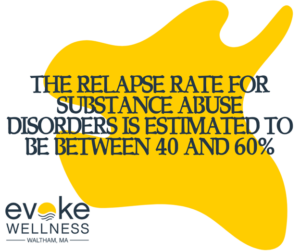You’ve made it through detox and acute withdrawal, but now you’re facing a new challenge: post acute withdrawal syndrome (PAWS). This lesser-known phase of recovery can catch you off guard with its persistence and intensity. As you navigate the ups and downs of PAWS, you may wonder if you’ll ever feel “normal” again. Rest assured, millions have walked this path before you and emerged stronger on the other side. In this article, we’ll explore what PAWS is, how long it typically lasts, and most importantly – how you can manage its symptoms to stay on track with your recovery journey.
Call us at (833) 287-7223 today or reach out online.
What Is Post-Acute Withdrawal Syndrome?
Long-Lasting Effects
Post-acute withdrawal syndrome (PAWS) refers to prolonged symptoms that can occur for months or even years after detoxing from addictive substances like alcohol, opioids, or benzodiazepines. Even after acute withdrawal ends, PAWS involves lingering effects on the brain and body.
Persistent Symptoms
Common PAWS symptoms include anxiety, depression, fatigue, insomnia, irritability, and cognitive impairment. These result from brain chemistry changes caused by addiction that take time to fully reverse after becoming sober. Lack of motivation and physical discomfort are also frequent experiences.
Relapse Risks
If left unmanaged, PAWS symptoms increase relapse vulnerability as cravings intensify. Continued treatment is crucial through therapies, support groups, and sometimes medication to avoid returning to substance abuse during this delicate phase of recovery.
Neonatal Impacts
In certain cases, babies can experience PAWS symptoms after birth if their mothers used opioids during pregnancy, known as neonatal abstinence syndrome (NAS). Proper prenatal care helps monitor and treat this condition.
Common Post-Acute Withdrawal Symptoms
Lingering Psychological Symptoms
Even after completing detox, psychological symptoms like irritability, fatigue, and drug cravings often linger for months due to brain changes from long-term substance abuse. Common post-acute withdrawal symptoms include anxiety, depression, insomnia, and persistent drug cravings.
Protracted Withdrawal Syndrome
After alcohol detox, patients may experience a cluster of symptoms known as protracted withdrawal syndrome including fatigue, nausea, anxiety, and mood disturbances that can persist for weeks or months as the brain resets its neurotransmitter levels.
Prolonged Benzodiazepine Withdrawal
With benzodiazepines like Valium or Xanax, post-acute withdrawal can involve rebound anxiety, insomnia, tremors and even seizure risk if not tapered properly under medical supervision. Cognitive impairments may also linger.
Why Does Post-Acute Withdrawal Syndrome Occur?
Brain Adaptations to Heroin Use
Heroin is a highly addictive opioid that causes physical and psychological dependence with prolonged use. When someone becomes addicted, their brain stops producing natural opioids like dopamine and endorphins. Instead, it adapts to relying on heroin to release these “feel-good” chemicals. This leads to tolerance, where higher doses are needed to achieve the same effects.
Abrupt Cessation Causes Imbalance
During heroin addiction, the brain fundamentally changes how it functions. When the drug is abruptly stopped, the brain remains impaired and cannot immediately revert to its pre-addiction state. This neurochemical imbalance is what triggers post-acute withdrawal syndrome (PAWS).
Lingering Psychological Symptoms
While the initial acute detox phase involves intense physical symptoms like nausea, vomiting and muscle aches for 1-3 weeks, PAWS refers to the psychological effects that can drag on for months. Symptoms like anxiety, depression, cognitive impairment, drug cravings and sleep issues persist as the brain struggles to heal itself.
Brain Healing Takes Time
The brain was altered by chronic heroin exposure over months or years. Recovering from that level of neuroadaptation does not happen overnight. PAWS occurs because it takes significant time – 18-24 months in many cases – for the brain to reset itself back to normal functioning after quitting heroin.
How Long Does Post Acute Withdrawal Syndrome Last?
Variable Duration
The duration of post acute withdrawal syndrome (PAWS) can vary significantly between individuals. It depends on factors like the substance used, dosage, duration of use, and other health conditions. According to sources, for benzodiazepines like Valium, PAWS symptoms have been reported to last from a few months to over a year in some cases.
Typical Timeframe
For opioids like heroin, experts note that while acute withdrawal lasts 1-3 weeks, psychological PAWS symptoms like cravings, anxiety and depression can persist for several months. Generally, with proper treatment and lifestyle changes, most PAWS symptoms tend to diminish gradually over 3-4 months.
Importance of Treatment
Seeking medically-assisted detox and comprehensive rehabilitation involving therapies is crucial for safe, effective management of both acute and post-acute withdrawal stages. Long-term treatment helps the brain rewire itself after substance dependence to prevent relapse triggered by prolonged PAWS.
Tips for Managing Post Acute Withdrawal Syndrome Symptoms
Healthy Routines
Establishing healthy routines can alleviate post-acute withdrawal syndrome (PAWS) symptoms like fatigue and lethargy after detox. Exercise, eating nutritious meals, and getting adequate sleep promote physical recovery. Limiting caffeine and sugar also helps regulate energy levels.
Therapy and Support
Cognitive-behavioral therapy and counseling provide coping strategies for PAWS symptoms like anxiety, depression, and insomnia. Staying in long-term addiction treatment after detox through night treatments or 12-step facilitation helps prevent relapse.
Medication Management
For severe PAWS from substances like benzodiazepines or opioids, medications under medical supervision may be needed initially. Pregabalin can ease valium withdrawal effects, while buprenorphine and methadone manage opioid cravings and withdrawal.
Mindfulness Practices
Mindfulness therapies like meditation, deep breathing exercises, and yoga can reduce stress and promote relaxation during PAWS. These self-care activities counteract symptoms like agitation, insomnia, and psychological effects from heroin abuse.
When to Seek Help for Post Acute Withdrawal Syndrome
Recognizing PAWS Symptoms
Post Acute Withdrawal Syndrome (PAWS) refers to prolonged psychological effects that may emerge during recovery. These can include depression, anxiety, difficulty concentrating, and impaired judgment – even after the initial withdrawal period. It usually takes months or years for such changes to surface after regular substance use.
When to Get Professional Help
You should seek professional treatment if PAWS symptoms become severe enough to interfere with daily functioning and your recovery process. Seeing a therapist can help manage conditions like distorted reality perception, inability to think clearly, mood swings, and physical discomfort.
Treatment programs like outpatient or intensive outpatient care offer support through therapies like CBT, DBT, and group sessions to cope with PAWS and prevent relapse. Mental health programs addressing underlying issues like anxiety or depression are also crucial for managing co-occurring disorders.
Frequently Asked Questions About Post Acute Withdrawal Syndrome
What is PAWS?
Post Acute Withdrawal Syndrome (PAWS) refers to prolonged withdrawal symptoms that can persist for weeks or months after detoxification from substances like benzodiazepines (e.g. Valium, Ativan) or opioids (e.g. heroin). PAWS symptoms may include anxiety, insomnia, depression, cognitive impairment, physical discomfort and cravings.
How long does it last?
The duration of PAWS can vary significantly between individuals. Some may experience symptoms for a few weeks, while others battle PAWS for over a year after becoming sober. Factors like dosage, frequency of use, genetics and presence of co-occurring mental health disorders can influence PAWS duration.
Is PAWS dangerous?
While PAWS itself isn’t life-threatening, the symptoms can be extremely challenging and increase relapse risk if not properly managed. Withdrawal from certain substances like benzodiazepines can be dangerous without medical supervision due to risks like seizures.
Managing PAWS symptoms
To cope with PAWS, a comprehensive treatment approach combining counseling, holistic therapies and sometimes medication is recommended. Medication-assisted treatment with drugs like Suboxone, combined with behavioral therapies, can be highly effective for opioid addiction recovery and preventing relapse during PAWS.
Conclusion
As you navigate post acute withdrawal syndrome, remember that healing takes time. Be patient with yourself and celebrate small victories along the way. By understanding PAWS symptoms and implementing coping strategies, you can successfully manage this challenging phase of recovery.
Key takeaways:
- PAWS is a normal part of the healing process
- Symptoms may come in waves but generally improve over time
- Self-care, support, and healthy habits are crucial
Stay committed to your sobriety journey. With perseverance and the right tools, you will overcome PAWS and build a strong foundation for long-term recovery. You’ve already taken the hardest step – now keep moving forward, one day at a time.
Begin Your Journey with Evoke Wellness at Waltham
If you or a loved one is considering outpatient treatment, Evoke Wellness at Waltham invites you to contact us. Our compassionate team is ready to answer your questions, discuss your needs, and help you take the first steps toward recovery. At Evoke Wellness, you will find more than just a treatment program – you’ll discover a community dedicated to your wellness and success. Together, let’s embrace the journey to recovery and the promise of a new beginning. Call us at (833) 287-7223 today or reach out online.



